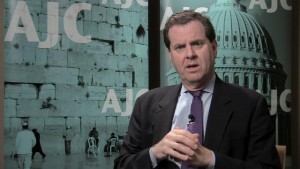
The Chinese economy has experienced its slowest growth since the aftermath of the Tiananmen Square massacre a quarter of a century ago, with the economy recording an expansion of 6.9 percent last year, compared to 7.3 percent in 2014. Growth in the fourth quarter of 2015 was even lower, at 6.8 percent.
Significantly, steel and electricity, two key components of Chinese heavy industry, recorded full-year contractions in output volumes. Steel production was down by 2.3 percent, while power generation fell by 0.2 percent. Coal production was down for the second year in a row.
Growth in industry and construction grew by what was described as “a paltry” 0.9 percent for the full year amid a four-year decline in the prices of industrial products. Fixed asset investment, which includes infrastructure and factory construction, grew by 10 percent, the lowest rate of increase since 2000. Infrastructure investment fell in December after earlier rising as a result of a government fiscal stimulus.
The slowdown in Chinese growth was announced even as the International Monetary Fund released a report cutting its forecasts for global growth for this year and 2017. The IMF included a warning that unless “key transitions in the world economy are successfully navigated, global growth could be derailed.”
The IMF forecast global growth of 3.4 percent in 2016, compared to a forecast of 3.6 percent it made in October, and 3.6 percent for 2017, down from 3.8 percent in October. The US economy was predicted to grow by 2.6 percent in 2016 and 2017, down from 2.8 percent, with euro zone growth forecast to come in at 1.7 percent, compared to the previous forecast of 1.8 percent.
Among the major risks to the global economy, the IMF cited: a sharper-than-expected slowdown in China; a further increase in the value of the US dollar, impacting corporate debt held in emerging market economies; “a sudden bout of global risk aversion,” that is, a financial crisis that could be triggered by a number of events; and an “escalation of ongoing geopolitical tensions which could affect confidence.”
Rather than being situated on some long-term or even medium-term horizon, such risks are an ever-present reality of the present global economic environment.
The IMF also warned that commodity markets posed a two-sided danger. Further falls in commodity prices, which are down to their lowest levels since the financial crisis of 2008-2009, would “worsen the outlook for already fragile commodity producers.” Brazil and Russia are already in recession, and the malaise could spread further.
Lower commodity prices could also impact high-yield debt—so-called “junk bonds”—issued by energy-related companies and “threaten a broader tightening of credit conditions.”
These warnings are underscored by the continuing fall in the price of oil. It has dropped to as low as $28 per barrel and could well go lower, with some analysts predicting $20 or even $16.
On Tuesday, the International Energy Agency warned that the global oil market “could drown in oversupply” as Iranian oil came back onto the market as a result of the lifting of sanctions. It said there would be an enormous strain “on the ability of the oil system to absorb the glut.”
While oil demand increased in 2015, the rate of growth has slowed as a result of recessionary trends in the global economy. With oil prices having fallen by 75 percent over the last 18 months, one of the biggest impacts of a continuing fall will be in corporate bond markets, where debts incurred when oil was $100 per barrel are no longer viable.
These trends will be further affected by the China slowdown, which, together with concerns over how far and how fast the Chinese currency, the renminbi (also known as the yuan), may fall, is one of the sources of continuing turbulence on global stock markets.
While there was general relief that the Chinese growth figures were not as bad as they might have been, sections of the financial press pointed to areas of growing concern. In an editorial on Tuesday, the Financial Times said “some optimism was justified,” given that the growth rate was within “touching distance” of the official target of around 7 percent. It also cited data showing that consumer spending was accounting for a greater share of Chinese growth, as China moved to decrease its dependence on manufacturing and heavy industry.
“Such progress,” the newspaper wrote,
“… does not disguise either the pain inherent in the transition or the deep faultlines that threaten to fracture China’s dynamism. Chief among these is the uncomfortable fact that China is buying much of its growth through a ballooning issuance of corporate and household debt.”
The Financial Times cited figures from the Bank for International Settlements showing that China has the highest private debt levels in the world, and that the cost of servicing this debt has risen from 12 percent of GDP in 2009 to 20 percent today.
“The danger now is that the contraction in industrial profits, the debt service burdens, and a flagging property market could together depress household income growth—jeopardising the consumer spending that forms the most robust stratum in the economy,” the editorial continued.
What is referred to as the “pain of transition” involves the destruction of whole swathes of industry and the loss of millions of jobs, raising before the regime its greatest fear—an upsurge in the struggles of the working class. There are already signs of such a movement.
There was a monthly record of 400 protests by Chinese workers in December, a result of growing unrest in the working class flowing from the increased financial turbulence associated with the devaluation of the renminbi, the stock market crash which began last August, and the ongoing slowdown in the economy.
The lower growth figures are also reflected in continuing job cuts in the major economies, with a series of companies in Europe cutting jobs across the board, including in electricity generation, airlines, steel and finance.
In the US, Johnson and Johnson announced Tuesday that it would cut 3,000 jobs in its medical device operations as part of a plan to slash $1 billion in costs.
There are warnings that US manufacturing is heading for a recession if it is not already in one. A survey published by the Federal Reserve earlier this month said that most of US manufacturing, with the exception of cars and aerospace, had been weakening over the course of the past eight months. According to the National Association of Manufacturers, manufacturing production, which was growing at a rate of 4.5 percent a year ago, has slowed to a rate of just 0.9 percent.
Just as in China, these worsening economic conditions and the continuing attacks on wages, jobs and social conditions are leading to greater resistance in the working class. The deep opposition to the contract imposed by the UAW bureaucracy in the US auto industry has been followed by the “sick out” protests of Detroit teachers over deplorable conditions in the city’s public schools and outrage over the lead poisoning of the water supply to the nearby city of Flint, a result of budget cuts.
This resistance is being fuelled by deepening social inequality, of which further evidence emerged this week with the publication of a report by the aid agency Oxfam. The study showed that that just 62 people held as much wealth as the bottom half of the world’s population.
As the report noted: “Far from trickling down, income and wealth are instead being sucked upwards at an alarming rate.”
Growing fears in ruling circles of an eruption of class and social conflict have already been voiced by the European Union’s Institute for Security Studies. In a report published in 2014, it pointed to “the conflict between unequal socioeconomic classes in global society,” noting that the tensions between the world of the poor and world of the rich “would increase, with corresponding consequences.” Those tensions have only increased since the report was written and there are signs that the consequences are emerging more clearly into the open.
Source Article from http://www.globalresearch.ca/china-confirms-economic-slowdown-as-imf-cuts-global-growth-forecast/5502557
Related posts:
Views: 0
 RSS Feed
RSS Feed

















 January 20th, 2016
January 20th, 2016  Awake Goy
Awake Goy 






 Posted in
Posted in  Tags:
Tags: 
















